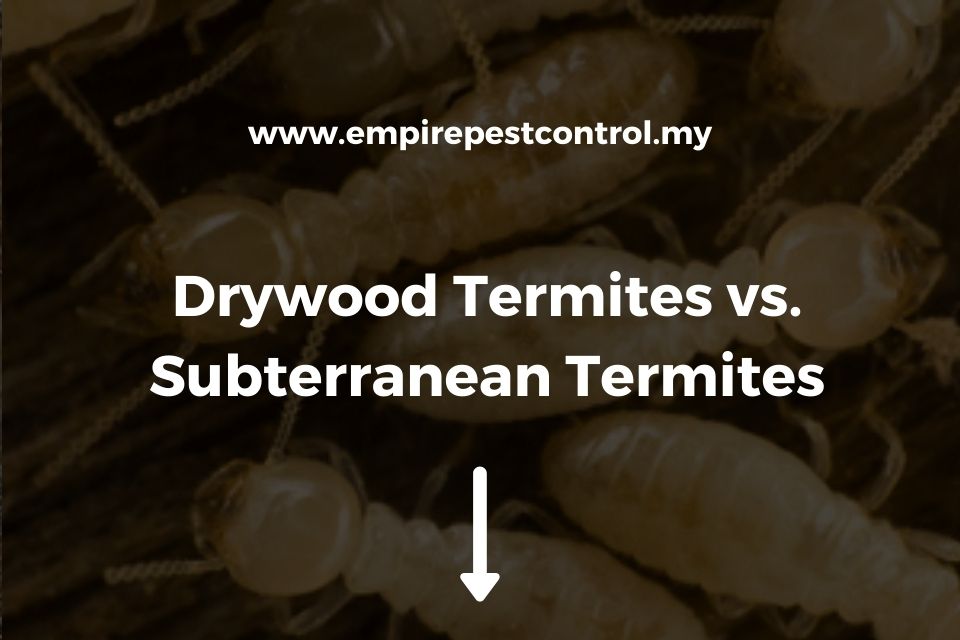Termites pose a significant issue for numerous homeowners. These annoying small creatures can cause substantial harm to your property if not addressed promptly.
When these creatures begin to invade your home, be sure to book our anti-termite treatment. You may click here for more information about our termite control services.
In this blog post, we’ll discuss the difference between subterranean termites and drywood termites so that you know which type of pest control is needed in your home.
Contents
How Do These Termites Look?
Subterranean termites are dark brown and about an inch long. They’re usually found underground in the soil feeding on dead wood, so they don’t come into contact with humans very often.
Subterranean termite queens on the other hand are much larger. They’re typically a light brown color, and they can grow to be up to five inches long!
These types of termites are known to be social insects and produce a “queen” that may live up to 25 years before she dies.
Drywood termites are also brown, but they’re smaller than subterranean termites at about half an inch long. They can often be found in furniture or near the windows of your home because their wings allow them to fly short distances.
These tiny little creatures live off of cellulose and don’t require contact with humans to survive.
Drywood termite queens are much smaller than their subterranean counterparts, but they’re also more social insects that produce “soldiers” for protection from predators such as ants or cockroaches who may attack them in the colony.
Where Are These Termites Living?
Termites, depending on what type they are, can be found in different places. Drywood termites typically live within the wood or paper products that make up a building’s structure, while subterranean termites live underground near areas of decomposing trees and leaves.
So basically, drywoods termite nests will only contain female workers who do all the work for their colonies (such as chewing wood and producing eggs) while subterranean termites have the queen as well.
As a result, drywood nests are much smaller than those of their counterparts who can be found in an “anastomosis” which is a network of underground tunnels where they all live together.
Because this type of nest has many more termites, it’s much more common for homeowners to see evidence of subterranean termites than subterranean ones in their homes.
How Do These Termites Find Food?
Subterranean and drywood termites quite differ when it comes to their food sources.
Drywood termites are able to eat wood, paper, and other cellulose-based products because they have mandibles that allow them to chew through these materials.
They’re also called “white ants” which is a good indication of what type of material they usually live in as well.
Subterranean termites on the other hand feed off dead plants or trees underground, so their mandibles aren’t strong enough for chewing up hard paper or wood.
These little creatures can only fly if it’s close enough (less than 50 feet) but once they land on something soft like tree bark or leaves, they’ll begin feeding right away!
Which Termite is More Dangerous?
Based on a report coming from experts, the most dangerous type of termite would be the subterranean termite.
The reason for this is because they live in the soil and can cause structural damage to homes by weakening foundations, floors, or walls with their tunnels of dirt.
They also eat wood which means that houses will need more repairs after these pests are gone!
Drywood termites on the other hand aren’t as dangerous because although they do fly and chew through paper products like cardboard boxes and some wood if any food sources become scarce then these pesky creatures will go away until there are better conditions!
Takeaway
You now know the difference between subterranean and drywood termites, their life cycle, how they get into your home or building, and what to do if you see them.
If you’ve found evidence of these pests in your house or business property but don’t have any idea how to handle it yourself, we can help!
Call us today for a free inspection and quote on getting rid of this problem once and for all.

